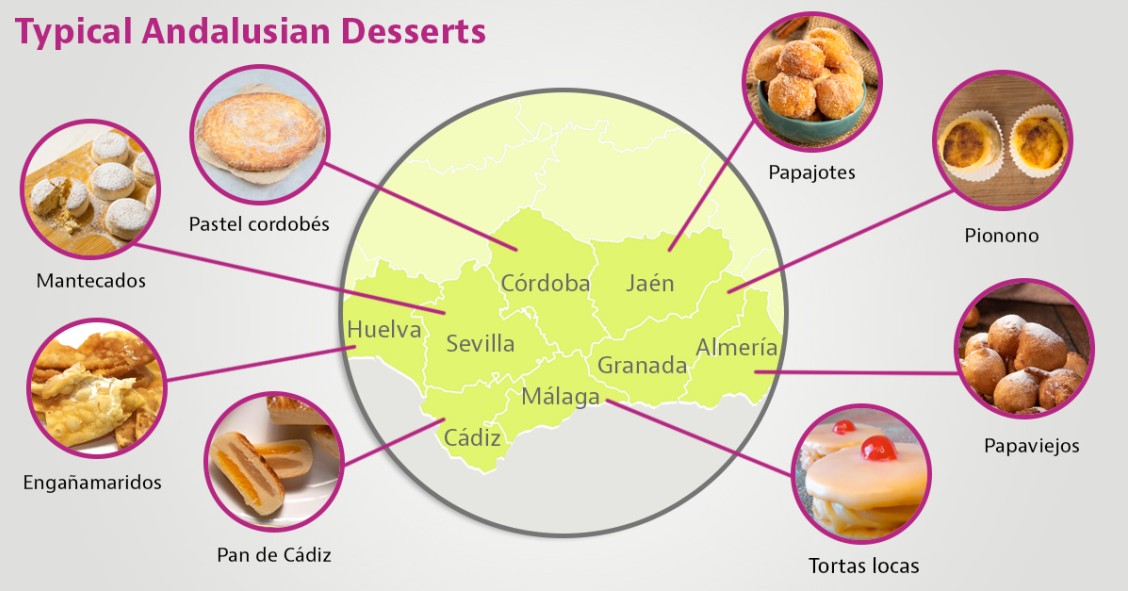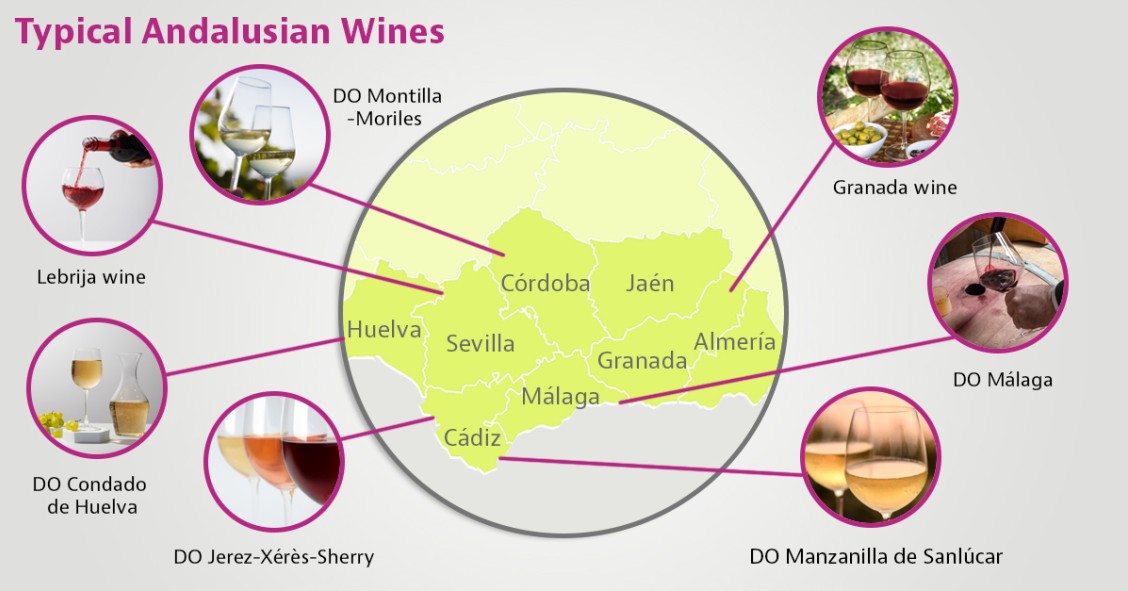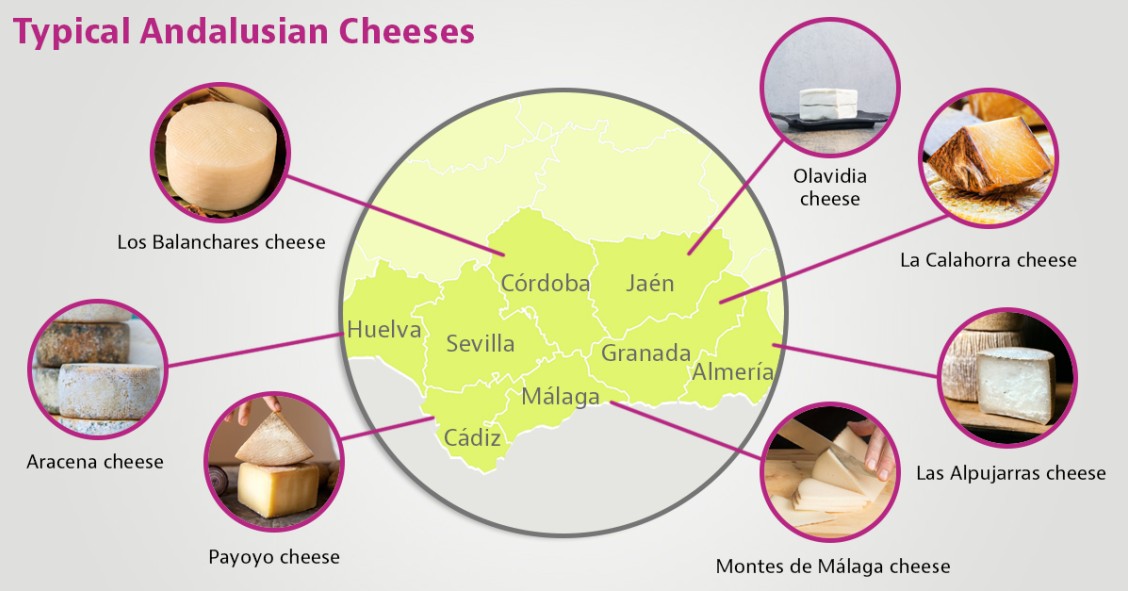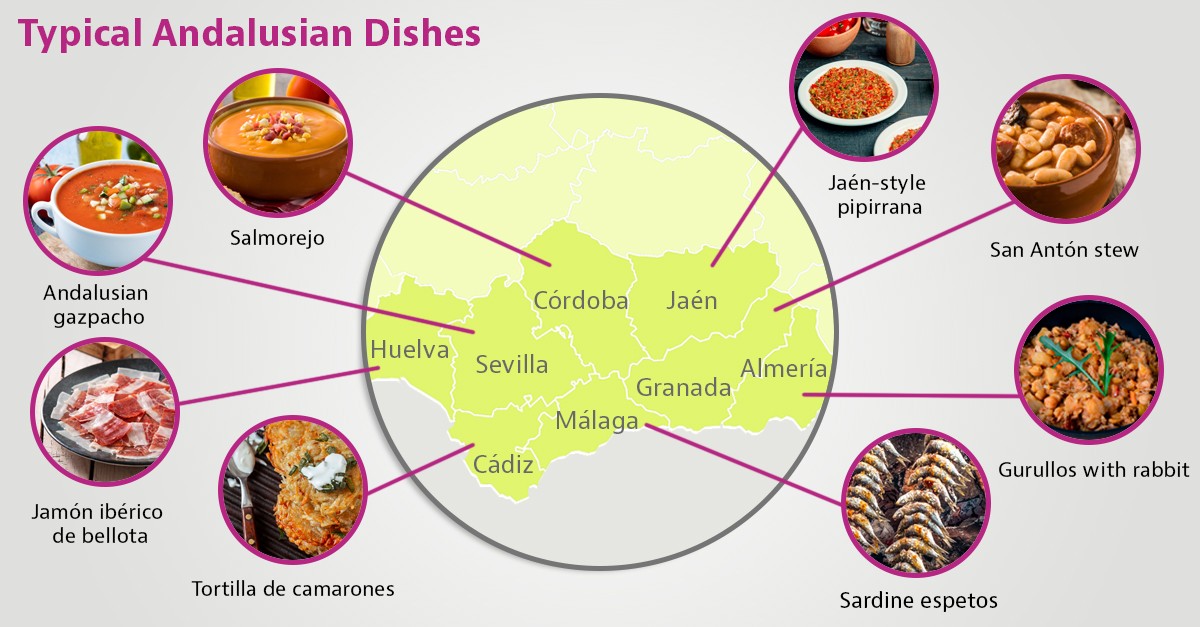
Andalusia, a region steeped in history and culture, is also a premier culinary destination. Its traditional dishes reflect the rich diversity of its landscapes, stretching from the mountains to the Mediterranean coast.
Renowned for its bold and varied flavours, Andalusian cuisine showcases a wealth of regional specialities. Each province brings its distinctive ingredients and recipes. Explore some of Andalusia’s most iconic dishes and savour the culinary delights that define this vibrant region.
Gurullos with rabbit
Gurullo is a type of handmade pasta made from flour and water, which forms the base of this traditional dish. It's a classic stew from Almería, where rabbit is gently simmered with peppers, tomatoes and spices, resulting in a rich and comforting meal.
Preparing gurullos with rabbit takes time and care, as the key lies in allowing the flavours to develop slowly. This hearty dish is perfect for sharing with family during the colder months and stands as a fine example of Andalusian culinary tradition and creativity.
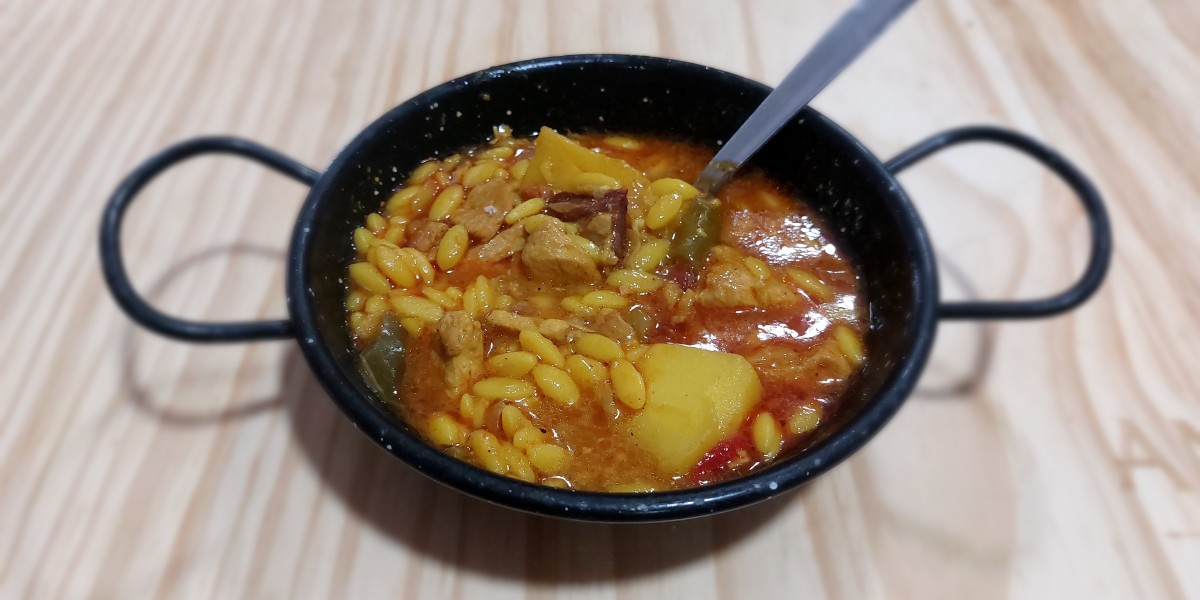
Olla de San Antón
Olla de San Antón is a traditional dish closely linked to the festival of the same name, celebrated in Granada. This hearty stew is made with dried beans, rice, morcilla (black pudding), bacon and other pork products, all slowly cooked to create a rich, flavourful dish.
More than just a meal, this stew is a communal celebration, typically prepared in large quantities to be shared with friends and family during the San Antón festivities, held on 17 January across the province of Granada.
Salmorejo
Salmorejo is a chilled creamy soup that hails from Córdoba and has become one of the most iconic dishes of Andalusia. Made from tomatoes, bread, garlic, olive oil and salt, it boasts a smooth, velvety texture that is both rich and refreshing. It is traditionally garnished with hard-boiled egg and finely chopped Serrano ham.
Packed with vitamins and antioxidants from the tomatoes, salmorejo is as nutritious as it is delicious. It stands as the culinary emblem of Córdoba, alongside other local specialities such as flamenquín (deep-fried pork loin rolled with Serrano ham) and braised oxtail.
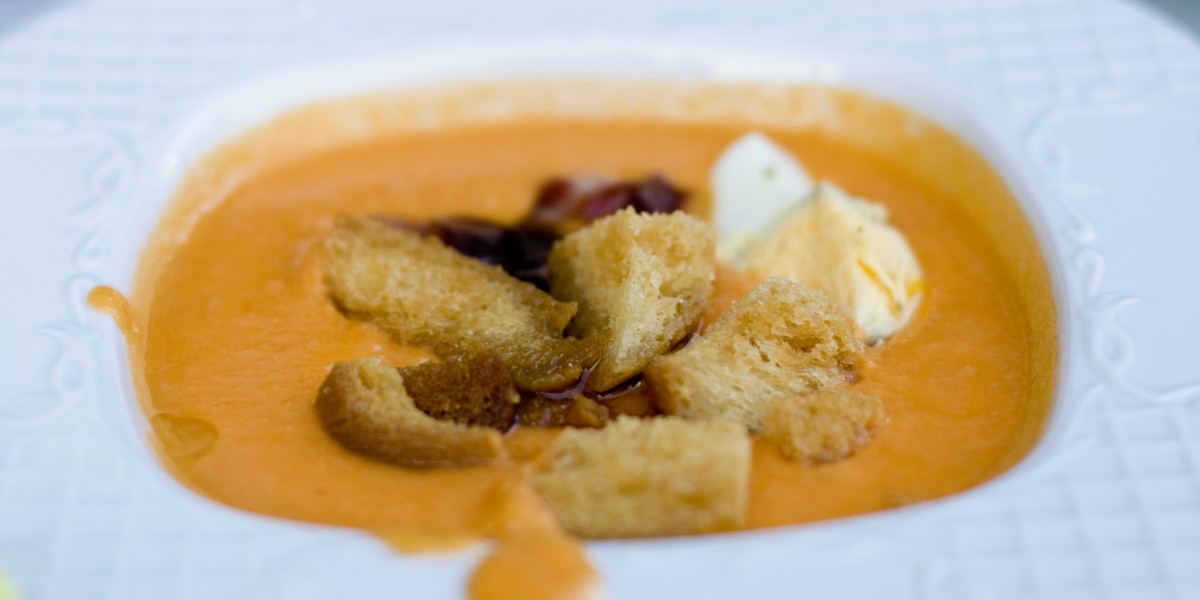
Pipirrana
Pipirrana is a refreshing salad from Jaén, typically made with ripe tomatoes, green peppers, onion and cucumber. It's simply dressed with extra virgin olive oil, vinegar and salt, highlighting the fresh flavours of its ingredients.
Perfect for Andalusia’s hot summers, pipirrana is a healthy, light dish and a fine example of how essential olive oil is in both Jaén and wider Andalusian cuisine.
Sardine skewers
Sardine skewers, or espetos, are a traditional speciality of Málaga and the Costa del Sol. Fresh sardines are threaded onto reeds and grilled over open wood embers, a method that intensifies their natural flavour.
Typically prepared in seaside chiringuitos (beach bars), the scent of the smoke, the crackle of the fire and the golden sardines roasting evoke the essence of a southern Spanish summer.
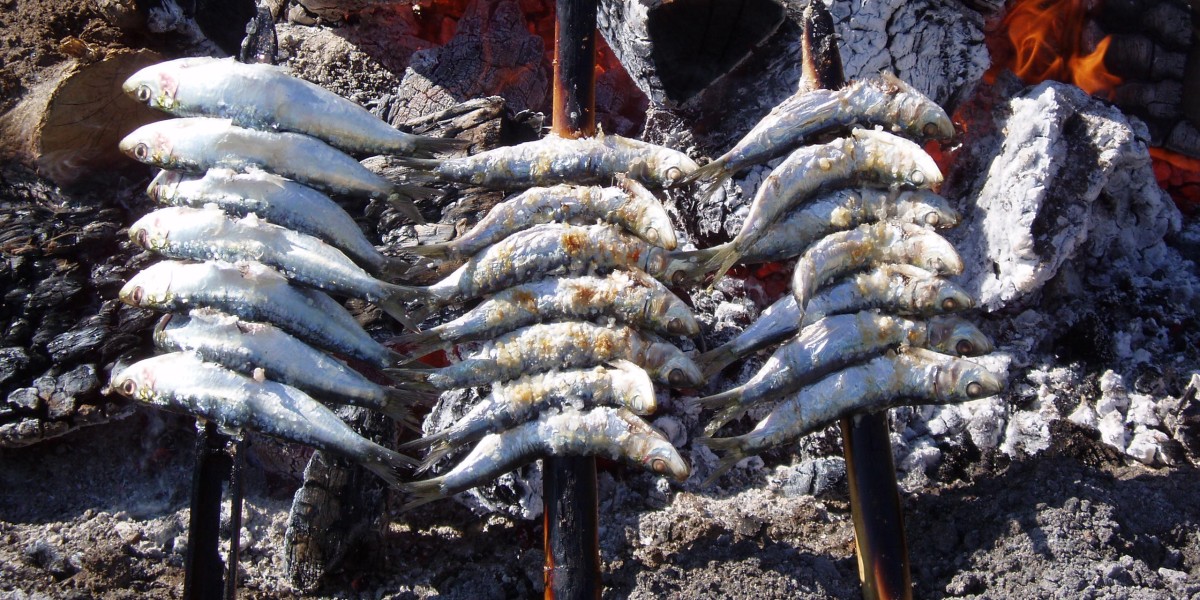
Gazpacho
Gazpacho is a cold soup made with tomato, pepper, cucumber, onion, garlic, stale bread, olive oil, vinegar and salt. Originating in several provinces, particularly Seville, it’s a refreshing and hydrating dish ideal for hot summer days.
Praised for its flavour and nutritional value, gazpacho showcases the best of Andalusian cuisine – simple, healthy and full of fresh, local ingredients.
Shrimp fritters
Shrimp fritters are a traditional dish from Andalusian cuisine, particularly popular in the province of Cádiz. It’s made with tiny shrimp mixed into a light batter of wheat and chickpea flour, water, onion and parsley.
The mixture is fried in hot olive oil until golden and crisp. With its delicate, crunchy texture and rich seafood flavour, it's a favourite at tapas bars and festivals, best enjoyed freshly made with a glass of white or manzanilla wine.
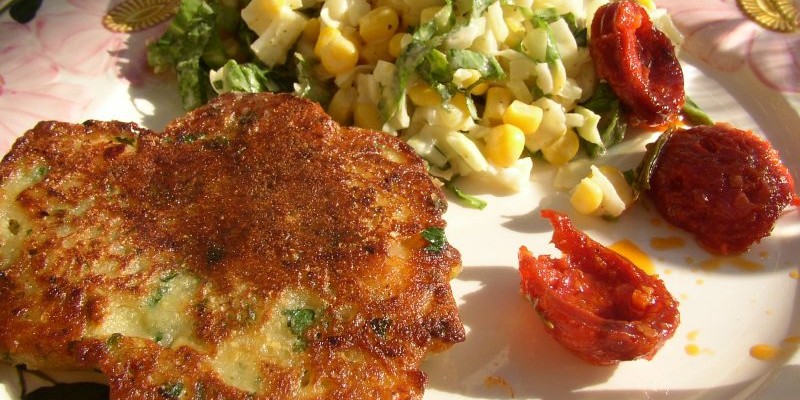
Iberian acorn-fed ham
Iberian acorn-fed ham from Huelva, protected by the Jamón de Huelva Protected Designation of Origin (PDO) and commonly known as Jabugo, comes from free-range Iberian pigs that feed on acorns during the montanera grazing season in autumn and winter.
This natural diet, combined with the pigs’ being able to roam freely in the pastures, gives the ham a creamy texture. It is cured for three to five years, developing its complex, distinctive flavours. The unique climate of Huelva, especially the Jabugo area, is key to its quality.
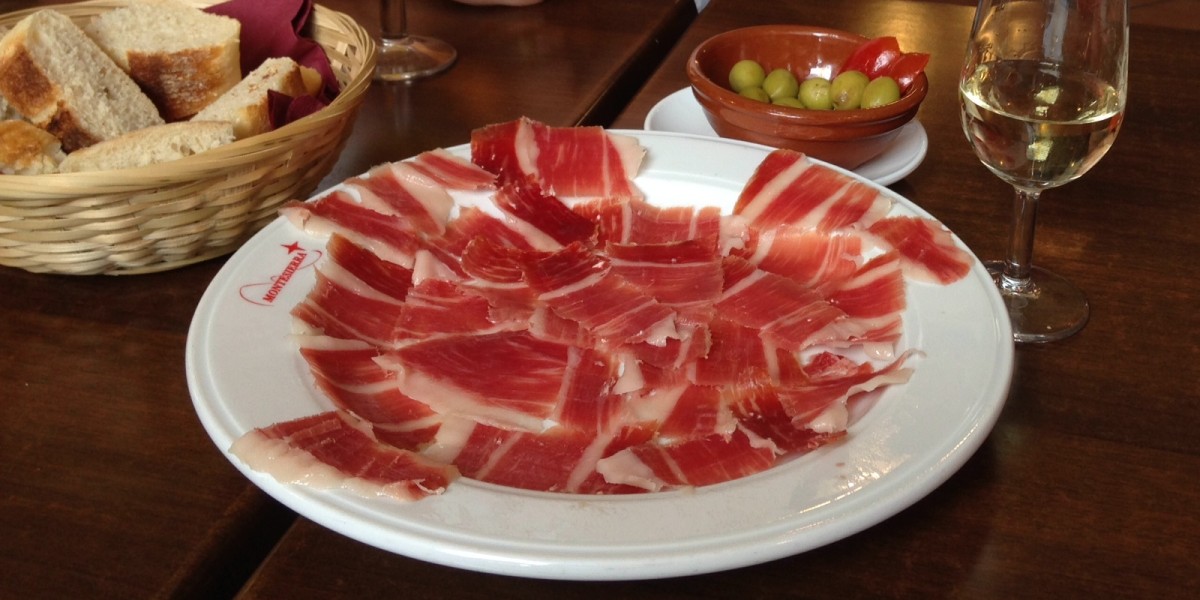
Foodie routes through Andalusia
Andalusia offers foodie routes across its eight provinces, showcasing products like Jabugo ham, extra virgin olive oil and Jerez wines. These routes invite you to explore the region’s culinary wealth through visits to wineries, curing cellars, markets and traditional restaurants.
If you’re considering making this charming region your home, exploring the local accommodation is a great way to fully enjoy all that Andalusia has to offer.
